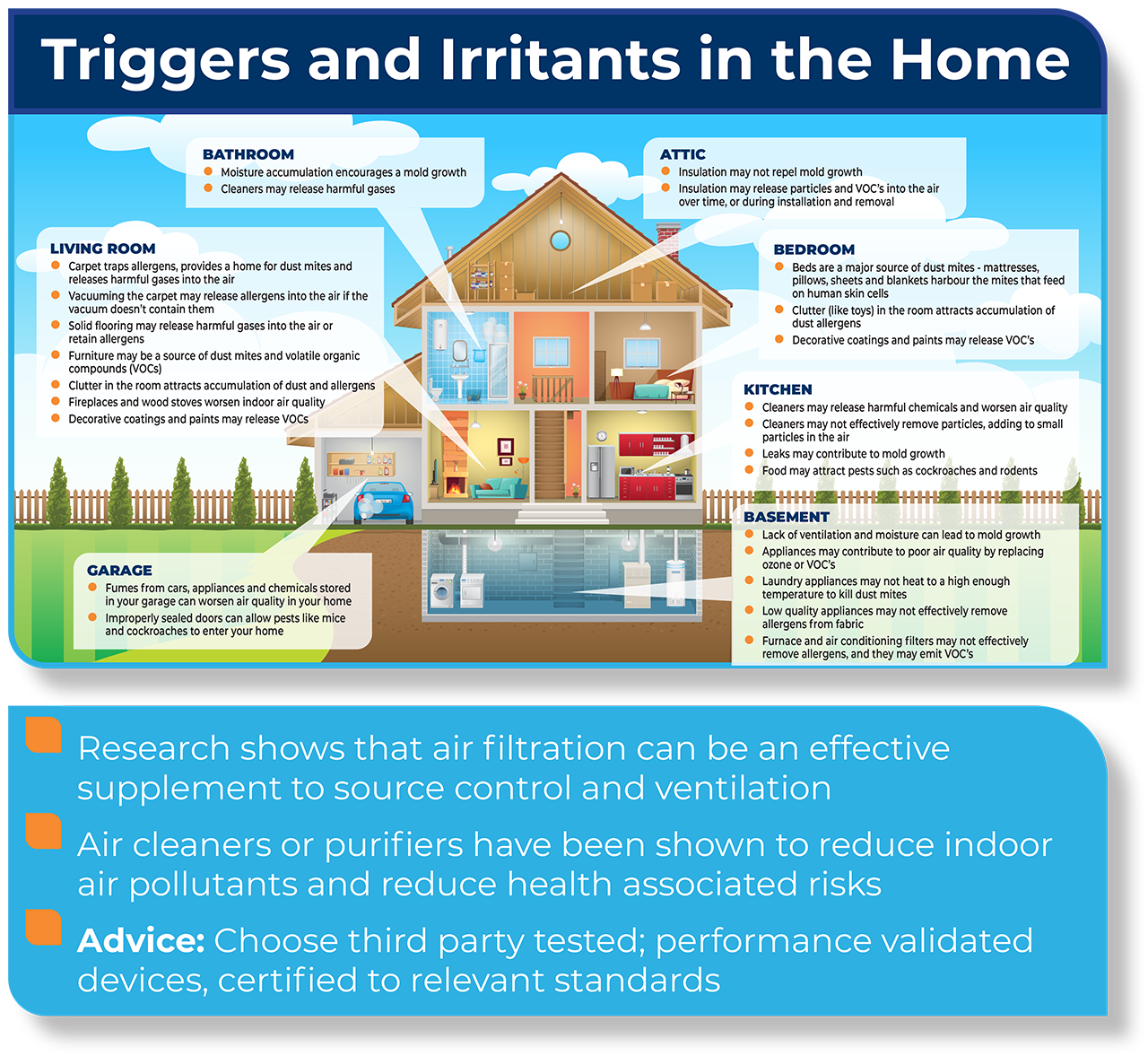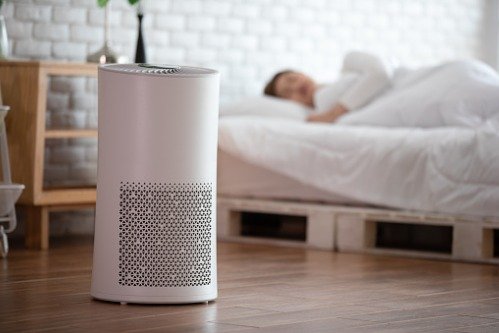Yes, air purifiers can help with indoor cockroach allergens. They work by filtering out particles from the air, including allergens.
Cockroach allergens can trigger allergic reactions and asthma. These tiny particles come from cockroach droppings, saliva, and body parts. Once in the air, they can cause sneezing, itchy eyes, and breathing problems. Air purifiers with HEPA filters can capture these allergens.
By cleaning the air, they reduce exposure to these triggers. This can lead to fewer allergy symptoms and better indoor air quality. But, air purifiers are not a complete solution. Keeping your home clean and free of cockroaches is also important. In this blog, we will explore how air purifiers work and their role in managing cockroach allergens.
Introduction To Indoor Cockroach Allergens
Indoor cockroach allergens are a common problem in many homes. These allergens come from cockroach saliva, droppings, and body parts. They can easily spread through the air and settle on surfaces. People with allergies or asthma may experience severe reactions. Understanding these allergens can help manage and reduce exposure.
Common Sources
Cockroach allergens can originate from various places in the home. Below are some common sources:
- Kitchen: Food crumbs and spills attract cockroaches.
- Bathroom: Moisture and warmth create a perfect environment.
- Basement: Dark and damp areas are ideal hiding spots.
- Walls and Floors: Cracks and crevices can house cockroaches.
Health Impacts
Exposure to cockroach allergens can lead to several health issues. Some of the most common impacts include:
- Allergic Reactions: Sneezing, itchy eyes, and skin rashes.
- Asthma Attacks: Increased frequency and severity of asthma symptoms.
- Respiratory Issues: Coughing, wheezing, and shortness of breath.
Reducing exposure to cockroach allergens is essential for better health. Using air purifiers can help by trapping allergens before they circulate in the air.

Credit: www.asthmaandallergyfriendly.com
What Are Air Purifiers?
Air purifiers are devices designed to remove contaminants from the air. They help improve air quality in indoor spaces. These devices can capture particles like dust, pollen, pet dander, and even cockroach allergens. By filtering out these particles, air purifiers can make the air cleaner and healthier to breathe.
Types Of Air Purifiers
There are different types of air purifiers, each with unique features. Here are some common types:
- HEPA (High-Efficiency Particulate Air) Purifiers: Capture 99.97% of particles as small as 0.3 microns.
- Activated Carbon Purifiers: Use activated carbon to remove gases and odors.
- UV (Ultraviolet) Purifiers: Use UV light to kill bacteria and viruses.
- Ionic Purifiers: Release ions that attach to particles, making them easier to capture.
How They Work
Air purifiers work through various mechanisms to clean the air. Here’s a closer look:
- Filtration: Air passes through filters that trap particles.
- Absorption: Activated carbon absorbs gases and odors.
- UV Light: UV lamps kill microorganisms like bacteria and viruses.
- Ionization: Ions bind to particles, which then settle or get trapped in filters.
In summary, air purifiers can significantly reduce indoor cockroach allergens. They do this by removing particles and improving air quality. Each type of purifier has specific advantages. Choosing the right one depends on your needs.
Link Between Air Purifiers And Allergen Removal
Indoor air quality is vital for health. Many suffer from allergies caused by dust, pet dander, and cockroach allergens. Air purifiers can help. They clean the air, removing harmful particles and allergens. But can they remove cockroach allergens effectively?
Effectiveness On Cockroach Allergens
Air purifiers can capture small particles. Cockroach allergens are tiny, often between 1-20 micrometers. High-Efficiency Particulate Air (HEPA) filters can capture these particles. HEPA filters can remove 99.97% of particles as small as 0.3 micrometers. This makes them effective against many allergens, including those from cockroaches.
Not all air purifiers have HEPA filters. Choosing the right purifier is key. Look for purifiers specifically designed to handle allergens. Some also come with activated carbon filters. These help remove odors and chemical pollutants, improving air quality further.
Scientific Studies
Several studies support the effectiveness of air purifiers. Research shows HEPA filters reduce allergens in the air. A study by the American Academy of Allergy, Asthma & Immunology found that using air purifiers in homes reduced allergen levels significantly. Another study published in the Journal of Environmental Health found similar results. Households with air purifiers had fewer allergens and better air quality.
Table: Effectiveness of HEPA Filters on Allergen Removal
| Allergen Type | Size (Micrometers) | HEPA Filter Effectiveness |
|---|---|---|
| Dust Mites | 10-40 | High |
| Pet Dander | 1-20 | High |
| Cockroach Allergens | 1-20 | High |
In conclusion, air purifiers, especially those with HEPA filters, can help with indoor cockroach allergens. They capture and remove tiny particles, improving air quality. Scientific studies back this up, showing significant reductions in allergen levels. Choose an air purifier with the right filter to ensure the best results.
Key Features To Look For In Air Purifiers
Dealing with indoor cockroach allergens can be challenging. Air purifiers can help reduce these allergens and improve air quality. But, not all air purifiers are created equal. Here are the key features to look for in air purifiers to effectively tackle cockroach allergens.
Hepa Filters
HEPA filters are one of the most important features in air purifiers. They can trap particles as small as 0.3 microns. This includes cockroach allergens. Look for air purifiers with a True HEPA filter. It ensures maximum filtration efficiency.
- Captures 99.97% of airborne particles.
- Removes dust, pollen, and pet dander.
- Reduces asthma and allergy triggers.
Activated Carbon Filters
An activated carbon filter is another crucial feature. It helps in removing odors and volatile organic compounds (VOCs). Cockroach allergens often come with unpleasant smells. An activated carbon filter adsorbs these odors, making the air fresher.
| Feature | Benefit |
|---|---|
| Odor removal | Eliminates musty smells from cockroach droppings. |
| VOC reduction | Reduces harmful chemicals in the air. |
Choosing the right air purifier with these features can significantly reduce indoor cockroach allergens. It will create a healthier living environment for you and your family.
Benefits Of Using Air Purifiers
Are you tired of dealing with indoor cockroach allergens? Air purifiers might be the solution you’ve been looking for. These devices offer numerous benefits to improve your indoor environment and health.
Improved Air Quality
Air purifiers help remove harmful particles from the air. This includes dust, pet dander, and even cockroach allergens. By filtering these particles, air purifiers improve the overall air quality in your home. Cleaner air means fewer allergens and a healthier environment.
Reduced Allergy Symptoms
Using air purifiers can significantly reduce allergy symptoms. Cockroach allergens can cause sneezing, coughing, and itchy eyes. By capturing these allergens, air purifiers help alleviate these symptoms. You’ll breathe easier and feel more comfortable in your home.
Limitations Of Air Purifiers
While air purifiers can help reduce indoor cockroach allergens, they do have limitations. Understanding these limitations is crucial for setting realistic expectations. Let’s dive into some key aspects.
Coverage Area
The effectiveness of an air purifier is often limited by its coverage area. Most air purifiers are designed to work within a specific square footage. If your room exceeds this area, the purifier may not work efficiently.
Consider these points:
- Check the manufacturer’s recommended room size.
- Use multiple units for larger spaces.
- Ensure doors and windows are closed to contain the air within the specified area.
Maintenance Requirements
Proper maintenance is essential for an air purifier to function effectively. Neglecting maintenance can reduce its ability to filter allergens.
Maintenance tasks include:
- Filter Replacement: Replace filters as recommended by the manufacturer.
- Cleaning: Regularly clean the unit to prevent dust buildup.
- Monitoring: Monitor air quality and performance indicators.
Skipping these tasks can compromise the purifier’s performance, making it less effective against cockroach allergens.
| Aspect | Details |
|---|---|
| Coverage Area | Limited by square footage, use multiple units if needed. |
| Maintenance | Requires regular filter replacement and cleaning. |
Alternative Methods To Reduce Cockroach Allergens
While air purifiers can help with indoor cockroach allergens, combining them with other methods can be more effective. It’s essential to integrate multiple strategies to keep your home allergen-free. Here are some alternative methods to reduce cockroach allergens.
Regular Cleaning
Keeping your home clean is crucial in reducing cockroach allergens. Focus on areas where food particles and moisture accumulate. Regularly sweep, mop, and vacuum floors. Pay special attention to the kitchen and dining areas. Ensure you clean behind and under appliances.
Wipe down countertops and tables after every meal. Use a damp cloth to capture dust and small particles. This helps prevent allergens from becoming airborne. Don’t forget to clean pet feeding areas. Cockroaches are attracted to pet food residues too.
| Cleaning Task | Frequency |
|---|---|
| Sweeping and Mopping | Daily |
| Vacuuming | Weekly |
| Wiping Counters | After Every Meal |
Pest Control Measures
Implementing pest control measures is essential in reducing cockroach allergens. Start by sealing cracks and crevices in walls, floors, and ceilings. Cockroaches can enter through tiny gaps, so it’s crucial to block their entry points.
Use bait stations and traps to monitor and reduce cockroach populations. Place them in areas where cockroaches are likely to hide, such as under sinks, behind appliances, and in dark corners. Keep food stored in airtight containers. This minimizes food sources for cockroaches.
Consider hiring a professional pest control service for severe infestations. They can use targeted treatments to eliminate cockroaches effectively.
- Seal cracks and crevices
- Use bait stations and traps
- Store food in airtight containers
- Hire professional pest control for severe infestations

Credit: www.jacionline.org

Credit: www.cafcoservices.com
Frequently Asked Questions
Can Air Purifiers Remove Cockroach Allergens?
Yes, air purifiers can help reduce cockroach allergens. They trap particles like cockroach droppings and shed skin. Using HEPA filters is most effective.
What Type Of Air Purifier Is Best For Cockroach Allergens?
HEPA air purifiers are best for cockroach allergens. They efficiently capture small particles, including allergens from cockroaches. Ensure the purifier has a high CADR rating.
How Often Should I Use An Air Purifier For Allergens?
Use an air purifier continuously for the best results. Keep it running, especially in rooms where cockroach allergens are likely present. Regular filter maintenance is essential.
Can Air Purifiers Prevent Cockroach Infestations?
Air purifiers don’t prevent cockroach infestations. They help reduce allergens but don’t eliminate cockroaches. Combine with proper pest control measures for best results.
Conclusion
Air purifiers can help reduce indoor cockroach allergens. They trap airborne particles. Cleaner air can ease allergy symptoms. Consider using one for better breathing. Regular cleaning and pest control also help. Keep your home clean and dry. This limits allergens and pests.
Always choose a high-quality air purifier. Your health will thank you. Stay proactive for a healthier living environment.
Rakib Sarwar is a Registered Pharmacist and a reputed health and wellness blogger. He has a great interest in Air purifiers.
